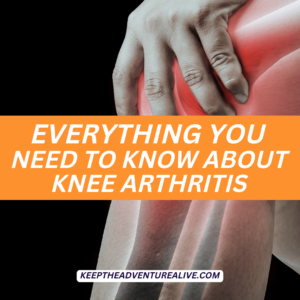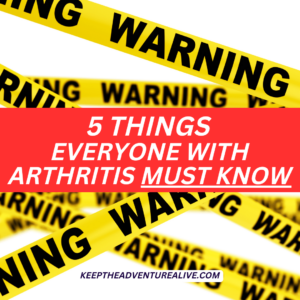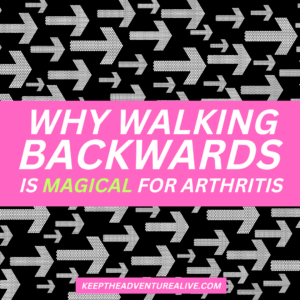Bone on bone arthritis does not have to be a death sentence to everything you love doing. When you are bone on bone, that typically indicates you have decreased cartilage between your joints and higher levels of bone and joint lining irritation. That bone and joint lining irritation is caused by higher levels of inflammation in your body. It is possible to be bone on bone, but not experience high levels of pain. Let’s take a look.
This article may contain affiliate links that provide me with small commission to support this blog with no additional cost to you.
So your doctor or another medical professional looked at your x-ray and told you that you’re bone on bone….
NOW WHAT?
Most people are left feeling hopeless after being told this about their joints. So you are not alone but I’m so glad you’re here reading this right now.
But what if I told you there have been people who have actually found ways to manage their pain and still adventure with the Adventurers for Life membership.
A bone on bone diagnosis can be scary. But hope is out there!
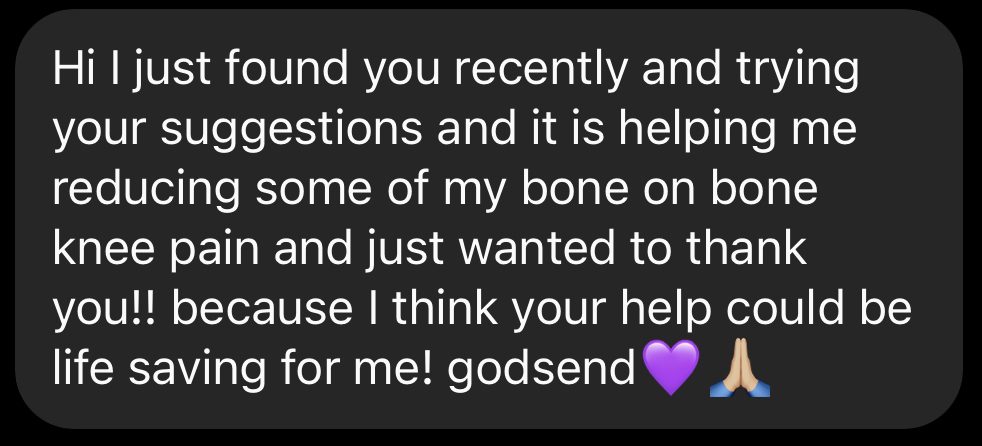
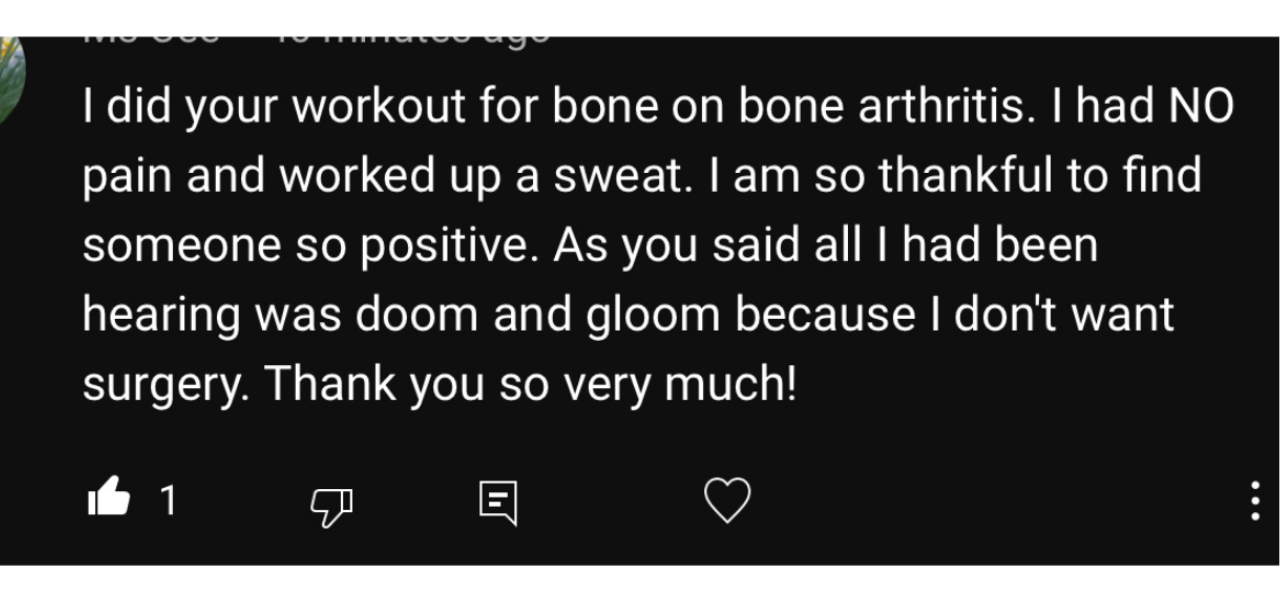
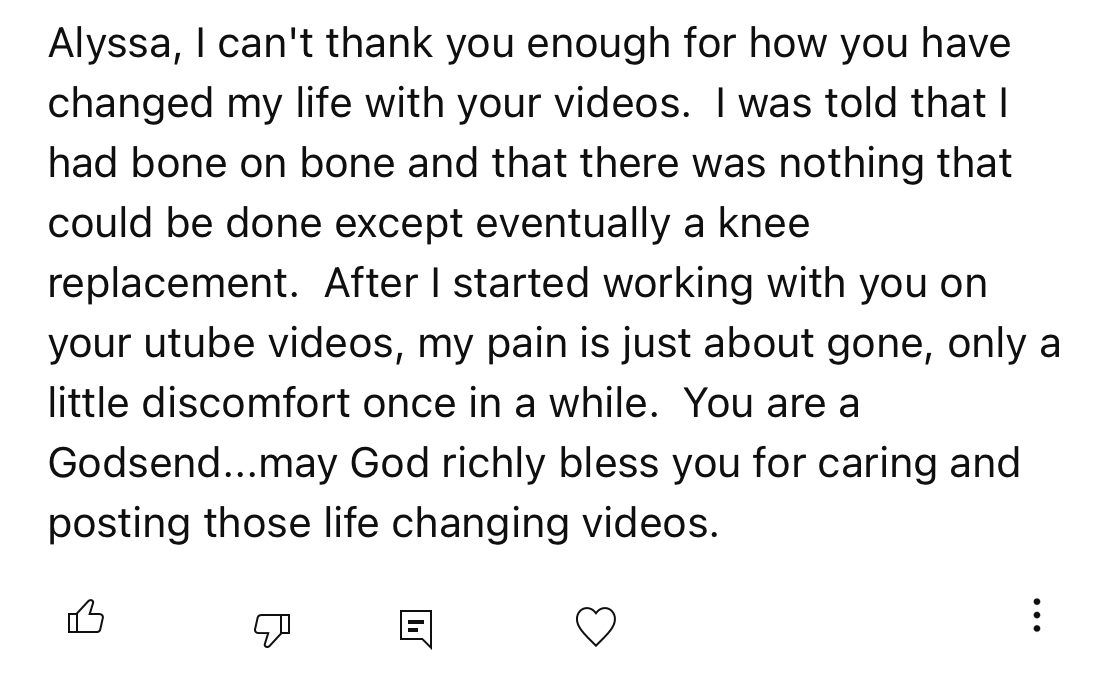
You can also listen to this podcast episode detailing one woman’s story about her journey with bone on bone knee arthritis here.
Surgery is not the only option if your joint is considered bone on bone.
There are actually many other options for your to find pain relief, that your doctor may not be explaining fully.
Here is a decision tree to help you decide if surgery is right for you.
First, you have to understand what the term “bone on bone” means then you will learn 5 ways you can find pain relief!
What does bone on bone mean?
This can be something scary to hear about your joint. But I want you to know something, it isn’t as scary as it sounds ☝🏼
When you are considered to be “bone on bone” it essentially means you have less cartilage between your joint and your bones may be rubbing together.
Bone pain can be complicated and misunderstood. The research is a little all over the place as far as what actually causes it. The interesting thing is that there are other factors that can contribute to pain other than actual bone on bone pain.
This is good news because pain can be reduced if these other factors are addressed.
Inflammatory cells can negatively affect the bone and cartilage repair process and make surrounding tissues hypersensitive.
There are many different factors that contribute to increased irritation when it comes to bone on bone pain.
Here are a few of the causes or irritation that can be improved upon:
- Muscle weakness, leading to decreased support of the joint and more stress going to the bones and tissues
- High levels of inflammation in your body from weight gain, the foods you eat, lack of sleep, high stress, and more
- Altered movement patterns that put more stress on one area of the joint
The idea is, once you reduce the inflammation, your bone on bone pain should diminish.
Here are 5 ways you can reduce this pain and inflammation if you have bone on bone arthritis:
1. Get stronger
I know this is easier said than done when experiencing severe joint pain. But it is still possible! Muscle strength can help to support your joints immensely.
A study published in 2015 looked at over 2,000 people with knee osteoarthritis. They found that x-ray images of knees did not actually correlate with the severity of knee pain as much as previously thought. Want to know what did? Quadriceps muscle (thigh muscle) strength! The less strength the participants had in their quads, the worse their knee pain was.
The quadriceps play a vital part in stabilizing the knee so when it becomes unstable from weakness, the joint has to accept more of the stress.
This also can apply to other joints such as the hip and lower back. Without muscle support, there isn’t much to lessen the stress to the joint and the tissues inside of the joint.
Contrary to popular belief, exercise is actually good for your joints and cartilage. The right exercise will not cause more damage! Find out more about the benefits here.
What’s the best way to get stronger? Start finding ways you can move without flaring up your pain.
If you have bone on bone knee arthritis, try this workout to start you journey to pain relief. This video alone has helped so many people feel like it is possible to move with bone on bone knee arthritis.
Take it from one of my Youtube subscribers, “Alyssa, I found this video by accident. I have no cartilage on inside of knee and have had a bad flare up and am really struggling. This is helping getting me balanced and moving again more than anything else. Thank you so much.”
If you’re looking to take a faster route to strengthening, the Adventurers for Life membership can help you strengthen your full body and give you the exact step by step process you need.
For example, a recent member was able to gain the strength and confidence to kneel on her bone on bone knee through following the workouts:
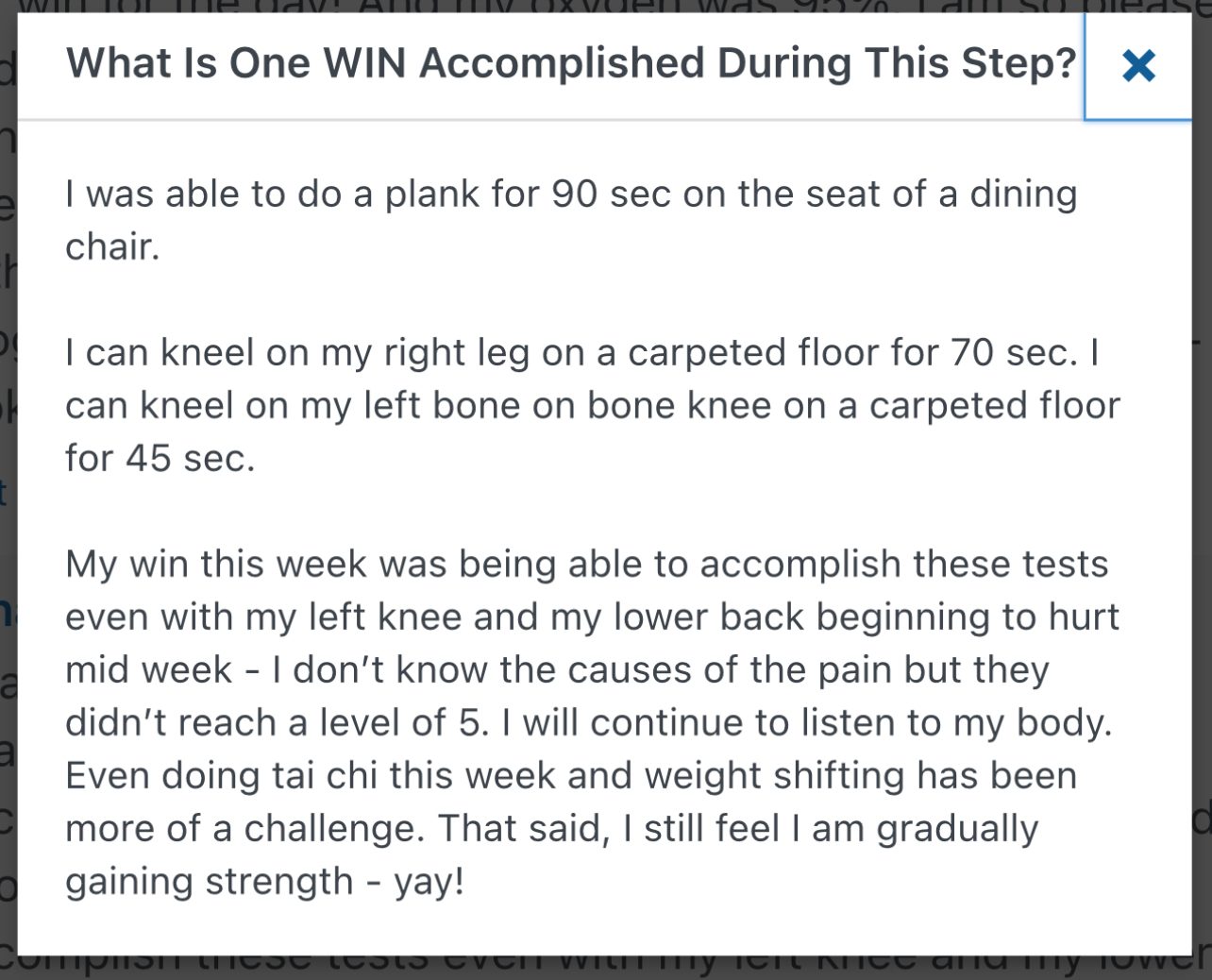
2. Fuel your body with the right foods
What you are putting into your body can dramatically impact the way your joints feel. If you are fueling your body with can help or further irritate your joints.
What are some foods that have been shown to increase irritation in your joints?
- Processed sugars (natural sugars are okay)
- Gluten and refined carbohydrates
- Processed foods
- Excessive alcohol
The number one thing I always recommend is if you are eating any of these foods above on a frequent basis, try to make 2-3 substitutes with anti-inflammatory foods. Here is the best list of anti-inflammatory foods.
Protein is also extremely important, especially if you have arthritis. The shocking part is most people aren’t eating enough protein. IF you aren’t, it can actually lead to more pain and a harder time losing weight too. Find out more on that here.
Another option for finding arthritis pain relief is to focus on controlling your insulin resistance. This is a new buzzword in the world of functional medicine but it is likely the root of a lot of weight gain and weight loss problems.
Here is a video diving deeper into insulin resistance and what the research says here.
Instead of focusing on starting a strict diet, focus simply on making a couple of substitutions. This will make you much more successful.
3. Improve your balance
Balance can become very important with bone on bone arthritis, especially if it is in your lower body.
Pain impacts the way your muscles work. It can also delay your balance reactions, leading to a higher risk for falls.
If you have osteoporosis, this can also increase your risk for serious injury if a fall were to occur.
Improving your balance can actually improve your pain levels too. I have almost all of my clients work on balance and they are shocked at how much it helps with pain.
Balance can play a pivotal role in reducing bone on bone pain in the knee, hip, and ankle. Take it from a member inside of Adventurers for Life as she began to progress through the strategically created workouts without flaring up her bone on bone hip pain:
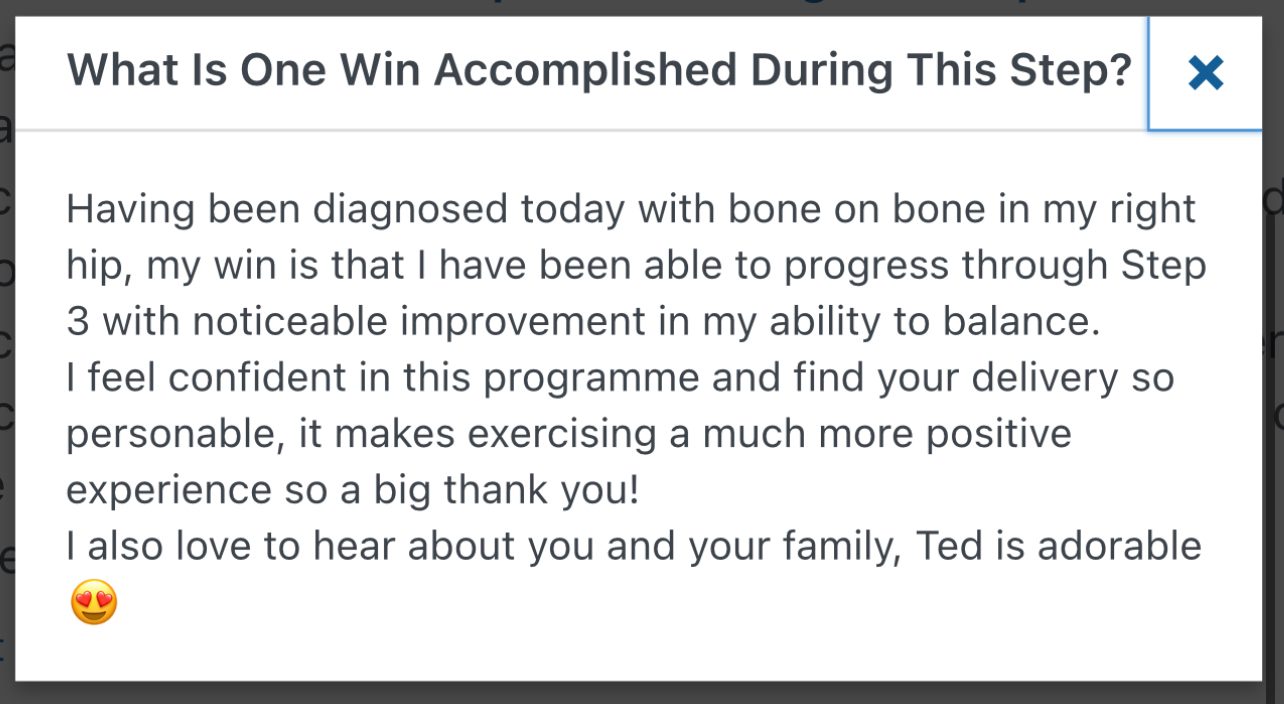
Here is a sneak peek into some of my favorite balance exercises to get you started on your journey to improving your balance.
Oftentimes, I find people humbled by balance exercises as they thought their balance was “good enough”. Balance is much more than being able to stand on one leg. Taking it the next step further can be the difference in pain relief.
4. Compression
Compression can help to provide support and pain relief especially in the knees, ankles, feet, and hands. If you are bone on bone in any of these areas- there are specific compression sleeves to help.
Compression sleeves can be worn during activity so when walking, running errands, exercising, when working, etc.
Compression sleeves are most commonly used with bone on bone knee arthritis to help reduce pain and mitigate swelling during activity. You can learn more about knee compression sleeves in this article.
As far as other compression sleeves, here are a few I recommend:
5. Be consistent
Consistency is key when it comes to making a change to arthritis pain. Many times, I see people giving up too early, right before they were about to make a big break through.
It is so incredibly important to find an exercise plan that you love as well as anti-inflammatory foods that you can easily add into your diet. Both of these can significantly reduce your bone on bone pain.
An exercise plan can be the hardest to find because you may be unsure about which exercises are safe and which maybe to avoid. It is imperative to figure out which movements your joints love and there is a lot of information out there!
The most powerful way to stay consistent is to understand why you are doing something. If you knew that you were doing the right things for your bone on bone knee(s) it can be easier to stay consistent.
If you are looking for workouts that will be nice to your bone on bone knee(s), I created a brand new, totally free, 3 Day Arthritis Walking Workout Challenge. You’ll learn new movements that will help reduce pain and stiffness while improving confidence with walking. Sign up right now by clicking the button below:
Conclusion
Bone on bone arthritis pain does not need to be the end of your active life. You do not have to give up everything you love. You may need to temporarily modify or change some activities but don’t give up hope!
There are ways you can reduce irritation in your joints. Please remember your x-rays aren’t everything and likely aren’t telling the whole story.
It is possible to find relief you just need the right steps to help you do so.
Without building proper strength, balance, and confidence- you may find bone on bone pain dictating more and more of what you can and can’t do.
Remember, you can do this. I believe in you.
Alyssa Kuhn

If you are looking to regain your active life but are unsure where to start, join the revolutionary membership, Adventurers for Life. This is a step-by-step path that not only will help you find pain relief but will help you unlock adventure. You’ll get workouts, tests to pass to make sure you are on the right track, community events and MORE.
Disclaimer: This post is for general informational purposes only. It should not be used to self-diagnose and it is not a substitute for a medical exam, cure, treatment, diagnosis, and prescription or recommendation. It does not create a doctor-patient relationship between Dr. Kuhn and you. You should not make any change in your health regimen or diet before first consulting a physician and obtaining a medical exam, diagnosis, and recommendation. Move Well Age Well, LLC and Dr. Alyssa Kuhn, PT, DPT are not liable or responsible for any advice, course of treatment, diagnosis or any conclusions drawn, services or product you obtain through this video or site.

